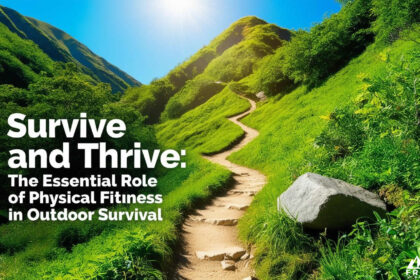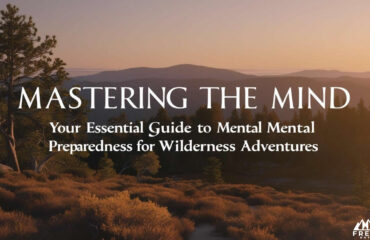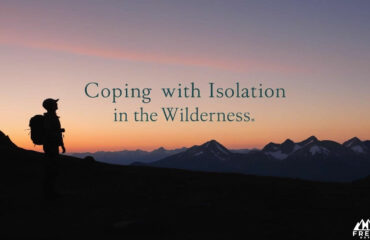
Discover how physical fitness is essential for outdoor survival, enhancing resilience, skills, and overall well-being in challenging environments.
The Importance of Physical Fitness in Outdoor Survival
The Critical Role of Physical Fitness in Survival Situations
Physical fitness is foundational for anyone venturing into the great outdoors, substantially affecting an individual’s ability to respond proactively in emergencies. In survival scenarios, the capability to move efficiently can literally be a lifesaver. For instance, a hiker who maintains robust cardiovascular health has a significant advantage when faced with sudden weather changes or challenging terrains, allowing them to navigate with agility and speed. This preparedness can dramatically increase one’s chances of reaching safety or finding resources, underscoring the connection between fitness and survival.
Being physically fit not only improves endurance and strength but also reduces the likelihood of injuries during outdoor activities. Injuries can be detrimental in situations where immediate help is unavailable, making it vital to have a body that can withstand the rigors of nature. A fit individual can recover more swiftly from physical exertion, which is essential when facing the stress of survival situations. For example, an experienced camper who has regularly trained in strength and endurance can effectively gather firewood, build a shelter, and forage for food without becoming overly fatigued or injured, thus enhancing their survival prospects. The ability to sustain physical health through fitness not only prepares individuals for the unexpected but also instills a sense of confidence and resilience that is crucial in the wild.
Understanding Outdoor Survival Fitness
Outdoor survival fitness is a multifaceted concept that incorporates strength, aerobic capacity, and muscular endurance, all of which are essential for overcoming various emergencies. This fitness is not just about lifting weights or running long distances; it involves a comprehensive approach to training that prepares the body for the unpredictable nature of outdoor environments. Skills like climbing steep hills, swimming across rivers, or lifting heavy materials to build a shelter require specific training that enhances these physical capabilities.
Cross-training methods are particularly effective in preparing individuals for the diverse challenges presented in survival situations. For instance, someone who regularly practices a combination of trail running, rock climbing, and bodyweight exercises will be better equipped to handle the physical demands of surviving in the wilderness. This variety in training not only improves physical abilities but also conditions the body to adapt to various environmental conditions, such as changes in altitude and temperature. Additionally, understanding the concept of survival fitness helps individuals set realistic goals and implement a structured training program that addresses all the necessary components for effective outdoor survival.
The Benefits of Green Exercise
Engaging in outdoor exercise, often referred to as green exercise, offers a wealth of benefits that extend beyond physical fitness. Exercising in natural settings enhances mood and lowers stress levels, acting as a natural antidote to the pressures of daily life. Research indicates that outdoor workouts can significantly elevate serotonin and endorphin levels, which helps in reducing anxiety and improving overall well-being. For example, someone who regularly hikes in a scenic landscape may find that the combination of fresh air, physical activity, and natural beauty uplifts their spirits, making them more resilient when faced with survival challenges.
Moreover, the psychological benefits of green exercise cannot be understated. Engaging with nature has been shown to improve self-esteem and mental clarity, crucial traits when dealing with high-pressure survival situations. A person who feels connected to the environment is likely to approach challenges with optimism and determination. This connection not only aids in physical recovery but also sharpens mental acuity, enabling individuals to make quick and effective decisions during emergencies. Studies reveal that even brief sessions of green exercise can yield significant mental health benefits, reinforcing the idea that incorporating outdoor activities into one’s routine is not just good for the body, but also for the mind.
Physical Fitness and Mental Resilience
The link between physical fitness and mental resilience is profound, particularly in survival situations where the stakes are high. A well-conditioned body enhances coping mechanisms for fatigue and discomfort, empowering individuals to endure challenges that would otherwise feel insurmountable. For instance, someone who regularly engages in rigorous physical training is likely to maintain focus and composure when confronted with unexpected challenges, such as a sudden storm or a lost trail. This mental fortitude is essential for making rational decisions under stress, ensuring that individuals can navigate adversity effectively.
Training outdoors can also help build self-confidence, an invaluable asset in unpredictable survival scenarios. High levels of physical fitness are associated with improved problem-solving skills, as a healthy body often leads to a sharper mind. For example, individuals who have built their endurance through long-distance hiking may find they can think more clearly about navigating back to safety when faced with disorientation. The physical challenges they have surmounted in training translate to greater confidence in their analytical abilities when confronted with real-life obstacles. This connection highlights the importance of developing a mindset focused on perseverance through consistent fitness routines, which is vital for anyone looking to thrive in the wild.
Key Survival Skills Enhanced by Physical Fitness
Several essential survival skills are directly enhanced by physical fitness, making it a critical aspect of outdoor readiness. Constructing shelters, for instance, requires not only physical strength but also endurance to gather materials and assemble them effectively. A fit individual can manage these tasks without succumbing to fatigue, allowing them to create a safe space for themselves in challenging conditions. The ability to navigate rough terrain with agility and stamina is equally vital, as it enables individuals to scout for resources or move to safety quickly.
Moreover, food acquisition skills—such as trapping small game—demand a combination of agility and strategic thinking, both of which are honed through regular fitness training. For example, a person who practices sprinting and agility drills can better navigate the forest floor when setting traps or hunting for food, enhancing their chances of survival. The physical fitness gained through consistent training also supports the ability to carry essential gear over long distances, an often overlooked but critical aspect of outdoor survival. Whether trekking across rugged landscapes or climbing mountains, a fit body can handle the demands placed upon it, making survival scenarios more manageable.
Training Regimens for Outdoor Fitness
Effective training regimens for outdoor fitness should incorporate a variety of exercises that challenge the body in diverse ways. Bodyweight routines, running, and interval training can all be performed in outdoor settings and are excellent for building strength and endurance. Incorporating varied terrains into workouts increases the physical challenge and prepares the body for real-world survival scenarios. For example, running on hilly trails or uneven surfaces can mimic the conditions one might encounter in the wild, enhancing overall fitness and adaptability.
Utilizing natural elements like logs or rocks for strength training can simulate the physical demands encountered while surviving in the wilderness. Activities such as lifting, carrying, and maneuvering these natural weights can help individuals prepare for real-life challenges they may face. Flexibility training, such as yoga or dynamic stretching, should also be included to enhance mobility and reduce the risk of injury during outdoor activities. A flexible body is less prone to injuries, which can be critical when navigating through rough terrains or engaging in physically demanding survival tasks. By embracing a comprehensive fitness approach, individuals can cultivate the necessary skills and fitness levels required to thrive in the great outdoors.
The Role of Endurance in Survival
Endurance training is vital for maintaining energy levels during prolonged outdoor activities, which can be critical in survival scenarios. When faced with survival challenges, improved cardiovascular fitness supports individuals’ ability to perform essential tasks without quickly succumbing to fatigue. For example, a hiker who has trained their endurance can navigate long distances over rugged terrain, allowing them to seek help or find resources without exhausting themselves. This endurance not only extends physical capabilities but also enhances mental resilience, enabling individuals to push through discomfort in critical situations.
Moreover, regular endurance training cultivates a mindset of perseverance, which is invaluable in survival situations. Individuals who have built their stamina through consistent training are more likely to handle unexpected challenges with tenacity and resolve. For instance, someone who has completed a series of long-distance runs may feel more prepared to tackle the uncertainty of a night spent outdoors, knowing they have the physical and mental strength to endure. The ability to maintain stamina during strenuous activities is crucial for ensuring survival and successfully navigating back to safety.
Social Benefits of Outdoor Fitness
Participating in group outdoor activities fosters social connections, making exercise a more enjoyable and motivating experience. Engaging in recreational sports or training with friends not only enhances fitness levels but also builds a supportive community that encourages consistent preparation for outdoor adventures. For example, a group of friends who regularly hike together can develop essential survival skills while sharing laughter and camaraderie, creating memories that strengthen their bond.
Social interactions during outdoor fitness can lead to shared knowledge and skills, enhancing a community’s readiness for emergencies. When individuals come together to learn about survival techniques, they not only improve their own skills but also contribute to the collective resilience of the group. For instance, participating in workshops or group training sessions can provide valuable insights into wilderness survival, equipping everyone with the tools necessary to face challenges head-on. Building a fitness community creates a network of support that encourages individuals to remain active, prepared, and motivated in their pursuit of outdoor adventures.
Long-term Health Benefits of Physical Fitness
Maintaining consistent physical fitness offers long-term health benefits that extend well beyond survival situations. Regular physical activity can improve self-esteem and mental health, essential traits for facing challenges in the wild. Engaging in outdoor fitness routines can also mitigate the adverse effects of urbanization and declining access to green spaces, fostering a healthier lifestyle that promotes both physical and mental well-being. For example, individuals who prioritize outdoor activities often report higher levels of happiness and life satisfaction, which can translate into better decision-making during survival situations.
Furthermore, a long-term commitment to fitness is correlated with reduced risks of chronic diseases, such as heart disease and diabetes, which can significantly hinder survival capabilities. A fit individual is more likely to maintain optimal health, ensuring they can tackle the physical demands of outdoor adventures without succumbing to illness. This foundation of fitness not only enhances overall quality of life but also allows individuals to engage more fully in outdoor experiences, creating opportunities for adventure and growth. By prioritizing physical fitness, individuals can enjoy the myriad benefits it brings, both in everyday life and in moments of crisis.
Emphasizing the Need for Preparedness Through Fitness
Physical fitness is not just about building strength; it represents a holistic approach that integrates mental resilience and critical survival skills. Preparing physically for outdoor adventures enhances both individual well-being and community readiness, fostering a culture of preparedness that benefits everyone involved. By developing a consistent fitness routine tailored for outdoor challenges, individuals can significantly improve their chances of survival during emergencies, ensuring they are equipped to handle the unpredictability of nature.
Making fitness a lifestyle choice empowers individuals to face the challenges of outdoor environments with confidence and competence. It transforms the perception of fitness from a mere activity to an essential tool for survival and well-being. Individuals who commit to regular physical training not only enhance their survival skills but also enrich their overall experience in nature, making every adventure more meaningful and fulfilling. By recognizing the importance of physical fitness in outdoor survival, individuals can embrace the spirit of adventure while being prepared for whatever challenges the wilderness may present.




